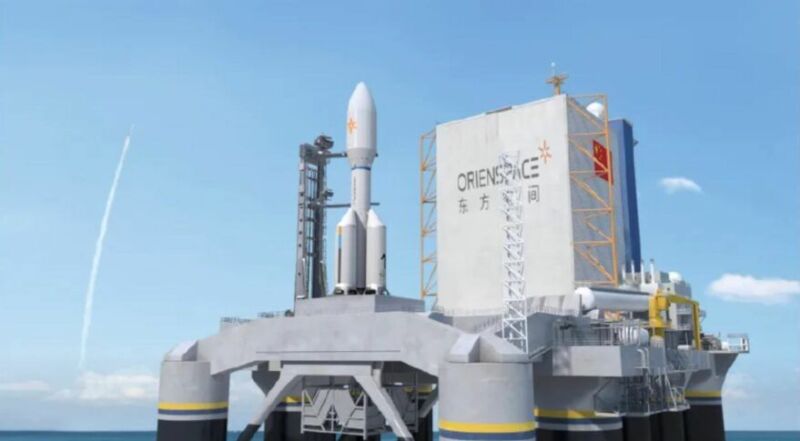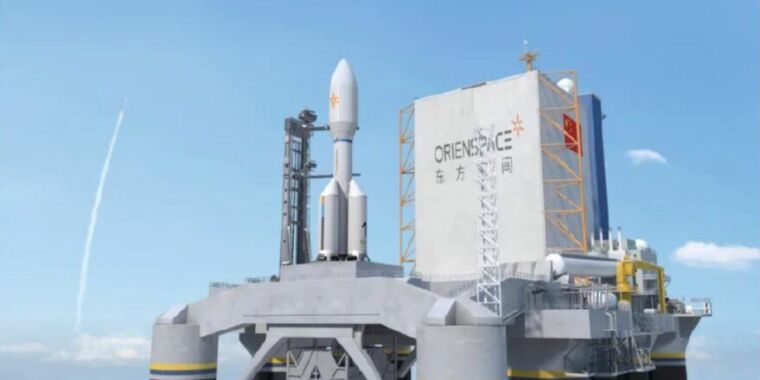
Orienspace
Welcome to Edition 4.44 of the Rocket Report! This week saw the successful completion of Boeing’s Starliner test flight to the International Space Station, which is a promising step forward for assured US astronaut access to space. And wherever you find yourself this Memorial Day Weekend, I hope it is a happy and safe one.
As always, we welcome reader submissions, and if you don’t want to miss an issue, please subscribe using the box below (the form will not appear on AMP-enabled versions of the site). Each report will include information on small-, medium-, and heavy-lift rockets, as well as a quick look ahead at the next three launches on the calendar.

Virgin Orbit targets August UK launch. The California small launch company expects to perform its first mission from England in late August, pending receipt of a launch license, Space News reports. In a speech at Space Tech Expo in Southern California, Jim Simpson, chief strategy officer of Virgin Orbit, said the UK mission will come after a launch from Mojave Air and Space Port in California called “Straight Up,” scheduled for no earlier than June 29. It will carry seven US government payloads.
Chuffed to bits … Virgin Orbit has a US government export control license and has completed the “majority” of the work needed for a British government launch license through the Civil Aviation Authority, the UK equivalent of the Federal Aviation Administration. “That’s all done, effectively,” Simpson said, although he did not estimate when to expect the formal award of a launch license. Spaceport Cornwall, the English airport that will host Virgin Orbit’s LauncherOne system, will also have to obtain a license. This will be the first orbital launch that takes off from UK soil, although LauncherOne will not light its engines until it is out over the ocean and dropped from a carrier aircraft. (submitted by Ken the Bin)
SaxaVord spaceport makes regulatory advance. The spaceport in far northern Scotland announced Tuesday that it secured approval for the final two components of its facility. The Scottish government will allow the spaceport to move forward with constructing a Launch and Range Control Center and a new section of road to improve access to the launch site.
Starting to lay those foundations … SaxaVord CEO Frank Strang said preparations for construction at the launch site are underway, and that the main part of the work will take place this summer. While SaxaVord is still working toward a first launch from the site late this year—likely with ABL Space Systems’ RS1 rocket—I would expect that flight to slip into 2023. This would be the first vertical launch to take place in the United Kingdom. (submitted by Ken the Bin)
Launcher wins engine development contract. Small rocket company Launcher won a $1.7 million contract from the US Space Force to assist the company’s development of a high-performance rocket engine, Space News reports. Launcher said the SBIR Phase 2B tactical funding increase will accelerate work on the company’s E-2 engine. That includes full-duration testing of the engine’s turbopump and long-duration testing of the combustion chamber. The company says the E-2 has a specific impulse at sea level of 288 seconds, and 326 seconds in vacuum, which is higher than other American LOX-kerosene engines.
Another boost … The company has been testing the engine at NASA’s Stennis Space Center in Mississippi, including in April when the engine generated its full thrust of about 22,000 pounds. The engine features a combustion chamber 3D-printed using a copper alloy and runs on liquid oxygen and RP-1 propellants. Launcher previously won an SBIR award from the Air Force in 2019, valued at $1.5 million, for E-2 engine development. “That was a really big boost for us in validation and funding,” Max Haot, founder and chief executive of Launcher. (submitted by Ken the Bin)








